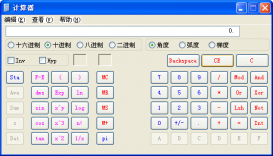系统启动一个线程的成本是比较高的,因为它涉及到与操作系统的交互,使用线程池的好处是提高性能,当系统中包含大量并发的线程时,会导致系统性能剧烈下降,甚至导致JVM崩溃,而线程池的最大线程数参数可以控制系统中并发线程数不超过次数。
一、Executors 工厂类用来产生线程池,该工厂类包含以下几个静态工厂方法来创建对应的线程池。创建的线程池是一个ExecutorService对象,使用该对象的submit方法或者是execute方法执行相应的Runnable或者是Callable任务。线程池本身在不再需要的时候调用shutdown()方法停止线程池,调用该方法后,该线程池将不再允许任务添加进来,但是会直到已添加的所有任务执行完成后才死亡。
1、newCachedThreadPool(),创建一个具有缓存功能的线程池,提交到该线程池的任务(Runnable或Callable对象)创建的线程,如果执行完成,会被缓存到CachedThreadPool中,供后面需要执行的任务使用。
|
1
2
3
4
5
6
7
8
9
10
11
12
13
14
15
16
17
18
19
20
21
22
23
24
25
26
27
28
29
30
31
32
33
|
import java.util.concurrent.ExecutorService;import java.util.concurrent.Executors;public class CacheThreadPool { static class Task implements Runnable { @Override public void run() { System.out.println(this + " " + Thread.currentThread().getName() + " AllStackTraces map size: " + Thread.currentThread().getAllStackTraces().size()); } } public static void main(String[] args) { ExecutorService cacheThreadPool = Executors.newCachedThreadPool(); //先添加三个任务到线程池 for(int i = 0 ; i < 3; i++) { cacheThreadPool.execute(new Task()); } //等三个线程执行完成后,再次添加三个任务到线程池 try { Thread.sleep(3000); } catch (InterruptedException e) { e.printStackTrace(); } for(int i = 0 ; i < 3; i++) { cacheThreadPool.execute(new Task()); } }} |
执行结果如下:
|
1
2
3
4
5
6
|
CacheThreadPool$Task@2d312eb9 pool-1-thread-1 AllStackTraces map size: 7CacheThreadPool$Task@59522b86 pool-1-thread-3 AllStackTraces map size: 7CacheThreadPool$Task@73dbb89f pool-1-thread-2 AllStackTraces map size: 7CacheThreadPool$Task@5795cedc pool-1-thread-3 AllStackTraces map size: 7CacheThreadPool$Task@256d5600 pool-1-thread-1 AllStackTraces map size: 7CacheThreadPool$Task@7d1c5894 pool-1-thread-2 AllStackTraces map size: 7 |
线程池中的线程对象进行了缓存,当有新任务执行时进行了复用。但是如果有特别多的并发时,缓存线程池还是会创建很多个线程对象。
2、newFixedThreadPool(int nThreads) 创建一个指定线程个数,线程可复用的线程池。
|
1
2
3
4
5
6
7
8
9
10
11
12
13
14
15
16
17
18
19
20
21
22
23
24
25
26
27
28
29
30
31
32
33
|
import java.util.concurrent.ExecutorService;import java.util.concurrent.Executors;public class FixedThreadPool { static class Task implements Runnable { @Override public void run() { System.out.println(this + " " + Thread.currentThread().getName() + " AllStackTraces map size: " + Thread.currentThread().getAllStackTraces().size()); } } public static void main(String[] args) { ExecutorService fixedThreadPool = Executors.newFixedThreadPool(3); // 先添加三个任务到线程池 for (int i = 0; i < 5; i++) { fixedThreadPool.execute(new Task()); } // 等三个线程执行完成后,再次添加三个任务到线程池 try { Thread.sleep(3); } catch (InterruptedException e) { e.printStackTrace(); } for (int i = 0; i < 3; i++) { fixedThreadPool.execute(new Task()); } }} |
执行结果:
|
1
2
3
4
5
6
7
8
|
FixedThreadPool$Task@7045c12d pool-1-thread-2 AllStackTraces map size: 7FixedThreadPool$Task@50fa0bef pool-1-thread-2 AllStackTraces map size: 7FixedThreadPool$Task@ccb1870 pool-1-thread-2 AllStackTraces map size: 7FixedThreadPool$Task@7392b4e3 pool-1-thread-1 AllStackTraces map size: 7FixedThreadPool$Task@5bdeff18 pool-1-thread-2 AllStackTraces map size: 7FixedThreadPool$Task@7d5554e1 pool-1-thread-1 AllStackTraces map size: 7FixedThreadPool$Task@24468092 pool-1-thread-3 AllStackTraces map size: 7FixedThreadPool$Task@fa7b978 pool-1-thread-2 AllStackTraces map size: 7 |
3、newSingleThreadExecutor(),创建一个只有单线程的线程池,相当于调用newFixedThreadPool(1)
4、newSheduledThreadPool(int corePoolSize),创建指定线程数的线程池,它可以在指定延迟后执行线程。也可以以某一周期重复执行某一线程,知道调用shutdown()关闭线程池。
示例如下:
|
1
2
3
4
5
6
7
8
9
10
11
12
13
14
15
16
17
18
19
20
21
22
23
24
25
26
27
28
29
|
import java.util.concurrent.Executors;import java.util.concurrent.ScheduledExecutorService;import java.util.concurrent.TimeUnit;public class ScheduledThreadPool { static class Task implements Runnable { @Override public void run() { System.out.println("time " + System.currentTimeMillis() + " " + Thread.currentThread().getName() + " AllStackTraces map size: " + Thread.currentThread().getAllStackTraces().size()); } } public static void main(String[] args) { ScheduledExecutorService scheduledExecutorService = Executors.newScheduledThreadPool(3); scheduledExecutorService.schedule(new Task(), 3, TimeUnit.SECONDS); scheduledExecutorService.scheduleAtFixedRate(new Task(), 3, 5, TimeUnit.SECONDS); try { Thread.sleep(30 * 1000); } catch (InterruptedException e) { e.printStackTrace(); } scheduledExecutorService.shutdown(); }} |
运行结果如下:
|
1
2
3
4
5
6
7
|
time 1458921795240 pool-1-thread-1 AllStackTraces map size: 6time 1458921795241 pool-1-thread-2 AllStackTraces map size: 6time 1458921800240 pool-1-thread-1 AllStackTraces map size: 7time 1458921805240 pool-1-thread-1 AllStackTraces map size: 7time 1458921810240 pool-1-thread-1 AllStackTraces map size: 7time 1458921815240 pool-1-thread-1 AllStackTraces map size: 7time 1458921820240 pool-1-thread-1 AllStackTraces map size: 7 |
由运行时间可看出,任务是按照5秒的周期执行的。
5、newSingleThreadScheduledExecutor() 创建一个只有一个线程的线程池,同调用newScheduledThreadPool(1)。
二、ForkJoinPool和ForkJoinTask
ForkJoinPool是ExecutorService的实现类,支持将一个任务划分为多个小任务并行计算,在把多个小任务的计算结果合并成总的计算结果。它有两个构造函数
ForkJoinPool(int parallelism)创建一个包含parallelism个并行线程的ForkJoinPool。
ForkJoinPool(),以Runtime.availableProcessors()方法返回值作为parallelism参数来创建ForkJoinPool。
ForkJoinTask 代表一个可以并行,合并的任务。它是实现了Future<T>接口的抽象类,它有两个抽象子类,代表无返回值任务的RecuriveAction和有返回值的RecursiveTask。可根据具体需求继承这两个抽象类实现自己的对象,然后调用ForkJoinPool的submit 方法执行。
RecuriveAction 示例如下,实现并行输出0-300的数字。
|
1
2
3
4
5
6
7
8
9
10
11
12
13
14
15
16
17
18
19
20
21
22
23
24
25
26
27
28
29
30
31
32
33
34
35
36
37
38
39
40
41
42
43
44
45
46
|
import java.util.concurrent.ForkJoinPool;import java.util.concurrent.RecursiveAction;import java.util.concurrent.TimeUnit;public class ActionForkJoinTask { static class PrintTask extends RecursiveAction { private static final int THRESHOLD = 50; private int start; private int end; public PrintTask(int start, int end) { this.start = start; this.end = end; } @Override protected void compute() { if (end - start < THRESHOLD) { for(int i = start; i < end; i++) { System.out.println(Thread.currentThread().getName() + " " + i); } } else { int middle = (start + end) / 2; PrintTask left = new PrintTask(start, middle); PrintTask right = new PrintTask(middle, end); left.fork(); right.fork(); } } } public static void main(String[] args) { ForkJoinPool pool = new ForkJoinPool(); pool.submit(new PrintTask(0, 300)); try { pool.awaitTermination(2, TimeUnit.SECONDS); } catch (InterruptedException e) { e.printStackTrace(); } pool.shutdown(); }} |
在拆分小任务后,调用任务的fork()方法,加入到ForkJoinPool中并行执行。
RecursiveTask示例,实现并行计算100个整数求和。拆分为每20个数求和后获取结果,在最后合并为最后的结果。
|
1
2
3
4
5
6
7
8
9
10
11
12
13
14
15
16
17
18
19
20
21
22
23
24
25
26
27
28
29
30
31
32
33
34
35
36
37
38
39
40
41
42
43
44
45
46
47
48
49
50
51
52
53
54
55
56
57
58
59
60
61
62
63
64
65
66
67
68
69
|
import java.util.Random;import java.util.concurrent.ExecutionException;import java.util.concurrent.ForkJoinPool;import java.util.concurrent.Future;import java.util.concurrent.RecursiveTask;public class TaskForkJoinTask { static class CalTask extends RecursiveTask<Integer> { private static final int THRESHOLD = 20; private int arr[]; private int start; private int end; public CalTask(int[] arr, int start, int end) { this.arr = arr; this.start = start; this.end = end; } @Override protected Integer compute() { int sum = 0; if (end - start < THRESHOLD) { for (int i = start; i < end; i++) { sum += arr[i]; } System.out.println(Thread.currentThread().getName() + " sum:" + sum); return sum; } else { int middle = (start + end) / 2; CalTask left = new CalTask(arr, start, middle); CalTask right = new CalTask(arr, middle, end); left.fork(); right.fork(); return left.join() + right.join(); } } } public static void main(String[] args) { int arr[] = new int[100]; Random random = new Random(); int total = 0; for (int i = 0; i < arr.length; i++) { int tmp = random.nextInt(20); total += (arr[i] = tmp); } System.out.println("total " + total); ForkJoinPool pool = new ForkJoinPool(4); Future<Integer> future = pool.submit(new CalTask(arr, 0, arr.length)); try { System.out.println("cal result: " + future.get()); } catch (InterruptedException e) { e.printStackTrace(); } catch (ExecutionException e) { e.printStackTrace(); } pool.shutdown(); }} |
执行结果如下:
|
1
2
3
4
5
6
7
8
9
10
|
total 912ForkJoinPool-1-worker-2 sum:82ForkJoinPool-1-worker-2 sum:123ForkJoinPool-1-worker-2 sum:144ForkJoinPool-1-worker-3 sum:119ForkJoinPool-1-worker-2 sum:106ForkJoinPool-1-worker-2 sum:128ForkJoinPool-1-worker-2 sum:121ForkJoinPool-1-worker-3 sum:89cal result: 912 |
子任务执行完后,调用任务的join()方法获取子任务执行结果,再相加获得最后的结果。












